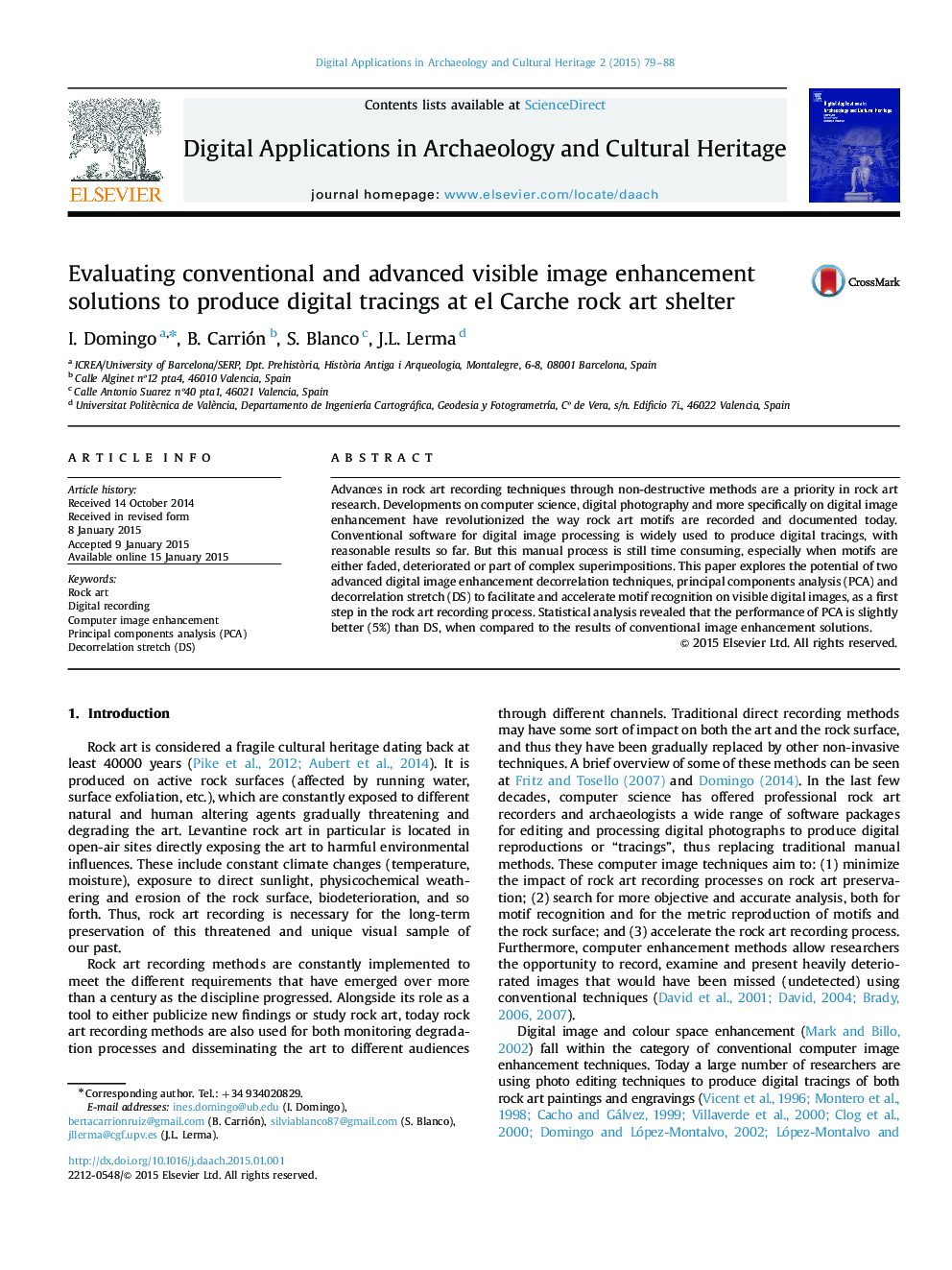| کد مقاله | کد نشریه | سال انتشار | مقاله انگلیسی | نسخه تمام متن |
|---|---|---|---|---|
| 108041 | 161835 | 2015 | 10 صفحه PDF | دانلود رایگان |
• Conventional versus enhanced decorrelation tracing of painted rock art.
• Principal components analysis versus decorrelation stretch.
• Relevance and level of accuracy of PCA and DS tested through statistical analyses.
Advances in rock art recording techniques through non-destructive methods are a priority in rock art research. Developments on computer science, digital photography and more specifically on digital image enhancement have revolutionized the way rock art motifs are recorded and documented today. Conventional software for digital image processing is widely used to produce digital tracings, with reasonable results so far. But this manual process is still time consuming, especially when motifs are either faded, deteriorated or part of complex superimpositions. This paper explores the potential of two advanced digital image enhancement decorrelation techniques, principal components analysis (PCA) and decorrelation stretch (DS) to facilitate and accelerate motif recognition on visible digital images, as a first step in the rock art recording process. Statistical analysis revealed that the performance of PCA is slightly better (5%) than DS, when compared to the results of conventional image enhancement solutions.
Journal: Digital Applications in Archaeology and Cultural Heritage - Volume 2, Issues 2–3, 2015, Pages 79–88
